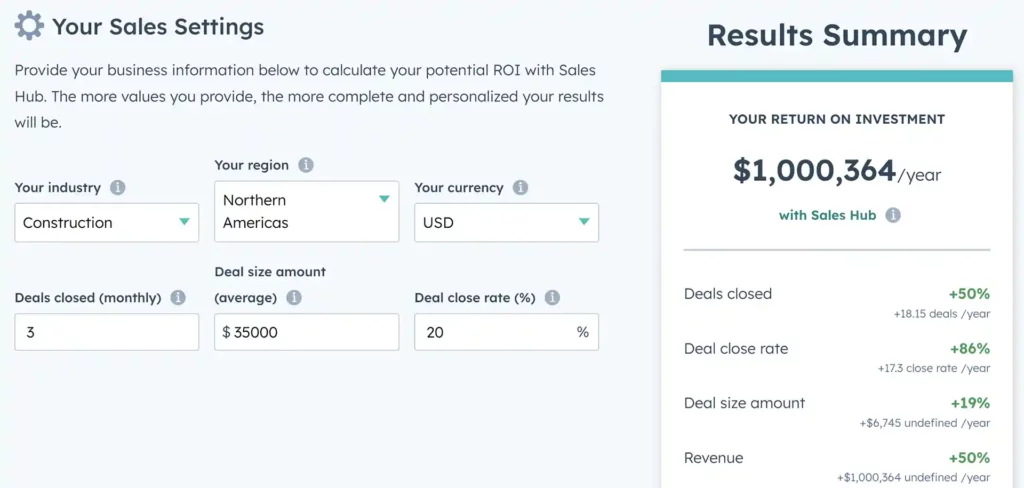SaaS Marketing Automation Can Boost Your Sales by 265X
SaaS Marketing automation can streamline and optimize many marketing tasks and processes. Yet, many SaaS companies struggle to pull off a marketing automation strategy.
To help you get started with marketing automation, this article provides answers to the following questions:
- Why does your SaaS need marketing automation to boost sales?
- To what extent do you need to employ marketing automation?
- What are the benefits of marketing automation for SaaS?
- Which marketing elements and processes can be automated?
- What are the aspects you should consider before implementing marketing automation?
- How to create a marketing automation strategy for your SaaS?
- What is a marketing automation workflow?
- What are the examples of marketing automation workflows?
After reading this article, you will learn everything you need to build your SaaS marketing automation strategy. So, let’s get started!
Does Your SaaS Company Need Marketing Automation Boost Sales And Conversions?

As SaaS marketing automation becomes mainstream, many SaaS companies successfully employ some form of marketing automation.
At the same time, others are struggling to decide whether marketing automation is right for their SaaS software. So, how do you know that marketing automation suits your business?
SaaS marketing automation can benefit any SaaS company or online store regardless of its size or the number of customers. Any SaaS company can employ marketing automation to meet specific goals.
For example, companies struggling to increase conversions can use marketing automation tools to increase conversion rates by delivering more personalized messages via email, push, social media, or direct mail.
And this is only one way to employ marketing automation. So, the real question you should be asking is, “to what extent do I need to employ marketing automation?”
To What Extent Do You Need to Employ Marketing Automation?
The extent to which your company needs to automate marketing depends on the price of the software you offer, average customer value (ACV), and volume.
The higher your average customer value, the less automation you will need to implement in your SaaS marketing used by Microsoft and HubSpot.
And vice versa – if you’re a high-volume and low-price company, you’ll have to implement marketing automation. Companies that rely on product-led growth should also look into marketing automation tools.
WhatsApp shows a great example of how a low-price and high-volume company should implement marketing automation at different customer life cycle stages. WhatsApp is the most popular messaging app, with more than 2 billion active users globally.
The company’s immense scope makes it virtually impossible for WhatsApp to convert and retain customers without marketing automation.
Companies that don’t measure customer base in millions, not to say billions, don’t need as much automation as WhatsApp does. Palantir, a secretive big data company headquartered in Silicon Valley, is a great example.
The company has 2,000 employees and less than 100 customers. You can’t rely heavily on automated marketing with high-value clients like the CIA, FBI, AirBus, JP Morgan Chase, and NSA. Can you imagine Palantir sending an automated promotional email to someone from the FBI? Not.
Companies like Palantir and WhatsApp teach us that the best marketing automation campaigns result in the perfect balance between personal touch and scalability. So, the extent to which your SaaS should employ marketing automation depends on your scale, average customer value, volume, and price.
If you’re still struggling to decide whether marketing automation is right for your SaaS, you can use this survey as a starting point. Assessing these factors will help you determine whether your business is ready for marketing automation.
The Benefits of SaaS Marketing Automation For SaaS Companies

Now that you know your SaaS needs marketing automation let’s learn about the benefits of automating your marketing efforts.
Increased conversions with SaaS marketing automation
Increased conversions are arguably the most important benefit of marketing automation. 58% of marketing automation users say conversion rate is the most critical metric to their automation strategy’s performance.
SaaS marketing automation enables content marketing through content personalization. Content personalization means using SaaS marketing automation tools to boost conversion rates by delivering more personalized messages via different communication channels.
Besides increased conversions, marketing automation can bring other benefits to the table. Here’s a list of the marketing automation benefits commonly mentioned by business owners, executives, and marketers:
Increased revenue.
Studies show that 17% of business owners, executives, and marketers cite increased revenue as one of the most significant marketing automation benefits.
- Improved customer service. Marketing automation enables faster and more efficient customer service.
- Getting more and better quality leads. Research shows that marketing automation users experience a 451% increase in qualified leads.
- Saving time. Studies show that 30% of business owners, executives, and marketers cite increased revenue as one of the most significant marketing automation benefits.
- Improved targeting of the messages. 68% of surveyed e-commerce marketers say improved message targeting is one of marketing automation’s main benefits.
- Reduced costs. Marketing automation is a cost-efficient way to attract and convert more leads into paying customers.
Identifying What You’re Hoping to Automate with SaaS Marketing Automation
Numbers prove that automation is a valuable asset to your marketing efforts and has many benefits. But what exactly do you need to automate to boost your sales conversions by 265X? To help you determine what needs automation, here’s a list of marketing elements and processes that can be automated.
- Outbound. Automating outbound marketing processes to generate interest and engage a prospective customer with a content piece.
- Lead nurture. Automate the lead nurturing process to engage customers who have previously interacted with your brand but are not ready to purchase.
- Onboarding/Signups. Automate the onboarding process and signups to engage customers who signed up for your service but are not paying customers yet.
- Customer life cycle campaigns. Automating welcome emails, user guides, upselling, cross-selling, and customer retention.
- Newsletters. Automating email marketing newsletters and other promotional email materials.
4 Things to Consider with SaaS Marketing Automation

Regardless of which marketing processes you’ve decided to automate, you should consider the following aspects.
Customer segmentation and lists
Your marketing efforts’ success depends on your ability to deliver the right messages to customers at the right time. That’s why customer segmentation is a crucial success factor.
Customer segmentation will give valuable insights into customer experiences, needs, and pain points to create a more targeted and personalized marketing automation campaign.
Integration with your SaaS marketing automation and CRM strategy
Your marketing automation must sync with your customer relationship management (CRM) strategy. Your SaaS marketing automation software means that your automation activities (emails sent to prospective customers) should be integrated with your CRM.
Content Marketing
Sharing relevant content with your audience is essential to SaaS marketing automation. While automation is responsible for the technical part, the quality of the content produced depends entirely on your marketing team.
That’s why you must focus on the value you can offer your customers. Here are some add-value content ideas to help you get started:
All of your content must be well-written. It must be inviting and interesting enough for users to continue engaging with your brand. Also, your content pieces should be correct and contain no grammar mistakes.
You can use the professional writing service’s help, like Essay Tigers, or check your copies with grammar checkers, like Grammarly. Either way, the quality of your content must be your top priority.
Analytics and SaaS Marketing Automation Software
Ensure that the SaaS marketing automation platform you choose offers resources to analyze customer data. Data analysis is paramount as it allows you to understand your customers better and evaluate your performance.
In the next section, we’ll discuss which metrics you can use to evaluate your marketing automation strategy’s performance during each stage of the customer life cycle funnel.
How to Create a Marketing Automation Strategy For SaaS Business?
Now as you’ve covered the basics, let’s dig deeper into how you can design your marketing automation strategy. Note that the following step-by-step guide is focused on marketing automation concerning the customer lifecycle journey.
Identify the lifecycle funnel.
The lifecycle funnel refers to your prospects’ process to become your customers, from the first touchpoint to churning or becoming loyal customers. The lifecycle funnel is typically broken down into multiple stages, like so:
- Awareness
- Interest
- Desire
- Action
Each SaaS has its unique customer lifecycle funnel. Your customer lifecycle doesn’t necessarily have to be the AIDA (Awareness, Interest, Desire, Action). Your lifecycle will depend on the customer touchpoints and your product.
AARRR (Acquisition, Activation, Retention, Referral, Revenue) is a well-known lifecycle funnel model created by Dave McClure, a Silicon Valley-based entrepreneur, angel investor, and founder of 500 Startups.
McClure’s model is perfect for SaaS startups as it allows you to effectively measure your company’s growth while at the same time evaluating customer engagement.
Here is an excellent visualization of McClure’s AARRR framework.
Even though the AARRR framework is widely accepted in the SaaS world, other life cycle funnels can better match your company. Here are just a few examples:
- AICA – Awareness, Interest, Consideration, Action
- AIDAS – Awareness, Interest, Desire, Action, Satisfaction
- TIEEA – Thought, Interest, Evaluation, Engagement, Action
- NAITDASE – Need, Attention, Interest, Trust, Desire, Action, Satisfaction, Evaluation
Sometimes, you will need to create different lifecycle funnels for customer personas. The best way to approach this is by starting with your primary customer or the most familiar persona.
Define the metrics
After you’ve identified the lifecycle funnel relevant to your business, the next step is defining the metrics you’ll be tracking at each stage of the funnel.
Different metrics correspond to each stage of the lifecycle funnel. Every metric is vital as it helps you measure your performance and ensure your marketing automation campaign’s best results.
Let’s look at this example of the AIDA lifecycle funnel with relevant metrics for each stage.
- Awareness. Key metrics: visitors, subscribers, and visitor-to-subscriber conversion rate
- Interest. Key metrics: trials, visitor-to-trial conversion rate, and average email open rate
- Desire. Key metric: net promoter score (NPS)
- Action. Key metrics: new customers, trial-to-customer conversion rate, and new monthly recurring revenue (MRR) added
Sometimes, your marketing automation campaign will require monitoring additional metrics. You shouldn’t limit yourself by the metrics you’ve chosen for your lifecycle funnel. You may consider keeping an eye on these additional KPIs:
- Customer lifetime value (CLTV) – a prediction of the net profit attributed to the future relationship with a customer
- The average revenue per user (ARPU) – the average amount of monthly revenue you generate per user
- The average revenue per paying user (ARPPU) – the average amount of monthly revenue you generate per paying customer
- Daily/weekly/monthly user retention – the number of customers who login your product daily/weekly/monthly based on the type of your product
- CAC payback period – the amount of time it takes for your SaaS to earn back the money initially invested in acquiring customers
Create a map of the lifecycle customer journey.
After you’ve identified the lifecycle funnel and metrics relevant to your SaaS, the next step is mapping the customer journey’s lifecycle. To design an effective marketing automation strategy, you must be able to understand customer experiences altogether.
Mapping out a customer journey within a lifecycle will help you think from the customer’s perspective. Here’s what your map should include:
- Customer goals
- Customer feelings
- Customer actions
- Marketing automation is required for each stage.
- Touchpoints
Attribute these (and other relevant aspects) to each customer lifecycle stage. Here are a few examples of customer journey maps.
Mapping touchpoints, actions, feelings, and goals will help you link customer journeys to your SaaS marketing automation efforts for better optimization.
Design a marketing automation workflow.
After you take your time to understand the customer lifecycle funnel and put yourself into your customer’s shoes, it’s time to build the actual marketing automation workflow.
The first thing you should do is to list or outline the workflow automation you plan on building. At this point, you can even use a pen and paper to outline the fundamental workflows.
You can create marketing automation workflows for everything, from customer onboarding and nurturing to retention and reactivation. There is no single way to outline the automation workflow.
Here are a few marketing automation workflows outlines to help you get started.
3 Marketing Automation Workflows
Now, let’s take a look at typical marketing automation workflows. Before you continue reading, let’s define the terms to avoid confusion.
Each marketing automation workflow has a trigger and an action. Trigger refers to the starting point of the workflow.
For example, a user entering a specific segment can be a trigger. Action refers to your activities once the trigger is activated. For example, sending an email to the users entering a specific segment is an action.
Some flows have a filter. A filter is designed to check whether a user meets specific characteristics. For example, you can say that segmenting the audience based on whether they are premium subscribers or not is a filter.
Capture leads with a lead magnet.
Trigger: A user submits a form and downloads a lead magnet (e.g., white paper, research, eBook, etc.) from your website.
- Action:
- Tag them (interested in your product)
- Wait a day
- Send a nurturing email sequence
- Wait a day
- Continue sending a nurturing email sequence
- Goal: Prompt a lead to try a free trial
- Metrics: Lead-to-trial conversion rate
- Tools: email & another automation tool of your choice
Use emails to segment your audience
Trigger: A user opened a profiling email
Scenario 1
Filter: A user checked the profiling email and clicked on CTA 1
Action: Tag them (interested in CTA 1)
Scenario 2
Filter: A user checked profiling email and clicked on CTA 2
Action: Tag them (interested in CTA 2)
Scenario 3
Filter: A user checked profiling email and clicked on CTA 3
Action: Tag them (interested in CTA 3)
Goal: Expand your user data, segment our audience, and understand customers better
Metrics: email click rate, open email rate
Tools: email & another automation tool of your choice
Using Facebook live chat to identify sales opportunities
Trigger: A hot lead showing interest in your product in the live chat on Facebook
Action: Add a user to the Facebook audience (hot leads) and use automation to assign a sales representative
Goal: Convert a lead into a paying customer
Metrics: Lead-to-trial conversion rate, customer conversion rate
Tools: Facebook & another automation tool of your choice
Wrap-Up on SaaS Marketing Automation to Boost Your Sales
Congratulations! Now, you’re ready to execute your SaaS marketing automation strategy to boost sales and conversions!
We’re listening.
Have something to say about your thoughts on SaaS marketing automation?
Share it with us on Facebook, Twitter, or LinkedIn.
General FAQ’s
What is SaaS software?
SaaS is a software delivery method that allows data access from any device with an internet connection and a web browser. In this web-based model, software vendors host and maintain the servers, databases, and code that makes up an application. The cloud-based model is so standard now that more than 60% of software seekers who call Software Advice only want web-based products—less than 2% specifically ask for on-premise software.
What is SaaS marketing automation software?
A marketing automation platform enables users to design, execute, and automate one or more time-bound marketing workflows (or flows). SharpSpring’s marketing automation software creates a seamless connection between marketing and sales with industry models provided by Matrix Technology Hub.
What is CRM software?
Small businesses have used CRM software to manage their sales pipeline and convert more sales quicker. The cloud, which refers to the internet, has given small businesses access to affordable hosted CRM Solutions or lead capture, nurturing, sales, campaign management, monitoring, analytics, technology infrastructure, virtual meetings, and communications with their target.
Why is SaaS marketing automation software essential?
The goal of marketing automation is to ultimately improve your SaaS’s bottom line – increase MRR and CLTV. Customer Success teams will provide better value through the onboarding and up-selling phases to retain more customers and increase average customer lifetime value (CLTV). SaaS marketing automation platforms, like SharpSpring, reduce your operating costs while increase lead conversions and sales.
Increase Your Sales Today
Get a Demo of the Top Marketing Automation Platform Today!

